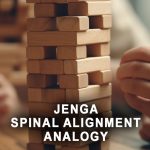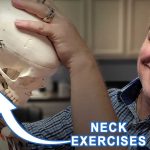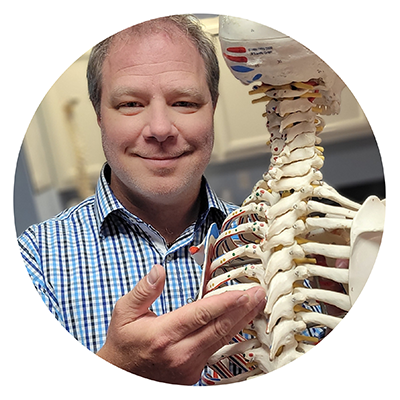Your neck is an essential part of your body, responsible for supporting your head and enabling movement. However, if you’ve ever experienced discomfort, heard crunching sounds, or felt tension when performing neck exercises, you’re not alone. In this blog post, we’ll explore the dynamics of neck muscles, the “tree analogy” for neck stability, and why crunching sensations in your neck might not be as concerning as they seem.
The Tree Analogy: Neck Stability Explained:
Imagine your head and neck as a newly planted tree in need of support. Just like a tree has guide ropes to maintain stability until it can stand on its own, your neck has muscles in all directions—north, south, east, and west—working to hold it in place. Over time, factors such as poor posture can cause your neck to lean forward, much like a tree bending due to external forces.
Tightness in the Front, Not the Back:
When we experience tension or tightness during neck exercises, it’s common to assume that the muscles in the back of the neck are to blame. However, this is often a misconception. In reality, when the neck leans forward, the front muscles become shorter and tighter, while the back muscles elongate. So, if you feel tightness and discomfort, it’s often in the front of the neck that you’re experiencing these sensations.
Stretching the Front, Tightening the Back:
To address discomfort and improve neck stability, it’s essential to focus on stretching the tight muscles in the front of the neck. Gentle neck stretches that involve tilting your head backward can help elongate these muscles, much like loosening the guide ropes on a leaning tree. This can alleviate tightness and discomfort in the front of the neck.
Crunching Sensations: Understanding Arthritis:
You mentioned hearing and feeling crunching sensations in your neck during exercises. While this may sound concerning, it’s often a sign of arthritis. Just like a rusty bolt with a nut, joints in the neck can accumulate “rust” over time in the form of arthritis. The crunching sensation occurs when these joints move, and the rust (arthritis) rubs against each other. It’s essential to note that this is a common occurrence as we age and doesn’t always indicate a severe problem.
Working on Neck Health:
The good news is that you can improve your neck health and reduce the crunching sensations through regular neck exercises. Much like working a rusty bolt to make it smoother, consistently moving your neck can help decrease the amount of arthritis-related discomfort and crunchiness. Over time, this can lead to greater neck mobility and comfort.
Conclusion:
Understanding the dynamics of your neck and its similarity to a tree seeking stability can help you approach neck exercises and sensations with more confidence. Remember to focus on stretching the tight front muscles, strengthening the back muscles, and don’t be overly alarmed by occasional crunching sounds, which are often a part of the natural aging process. By taking care of your neck through exercises and proper posture, you can maintain a healthier, more comfortable neck for years to come.




